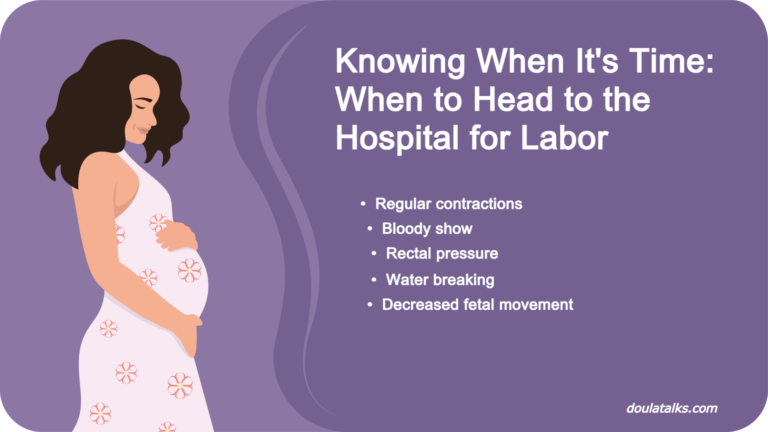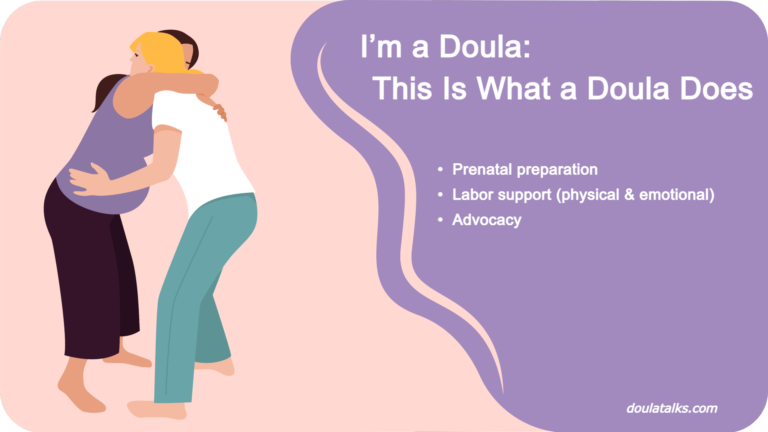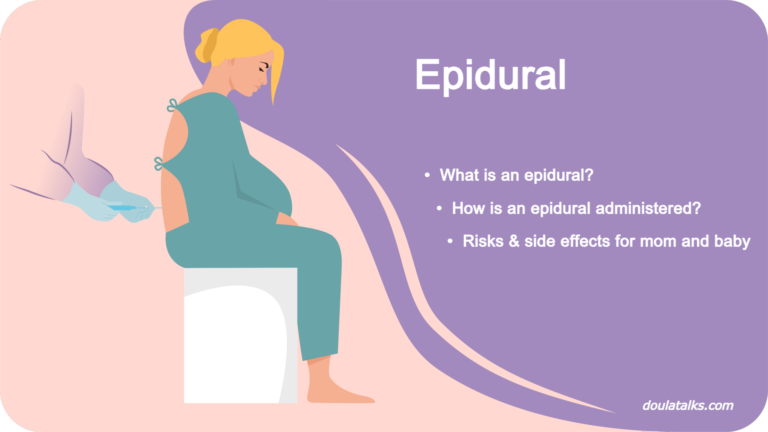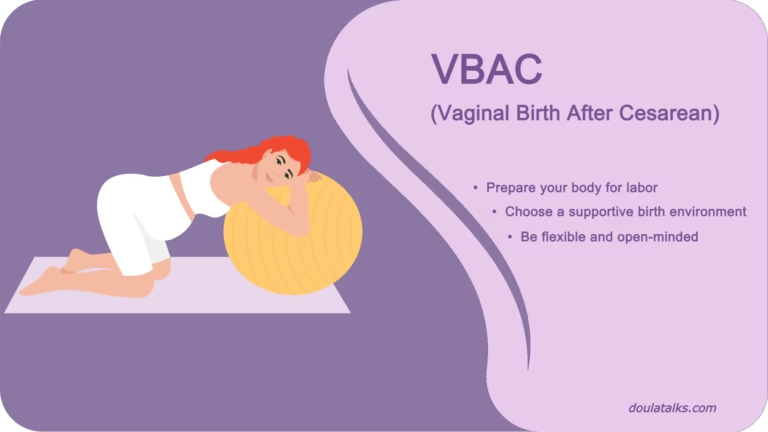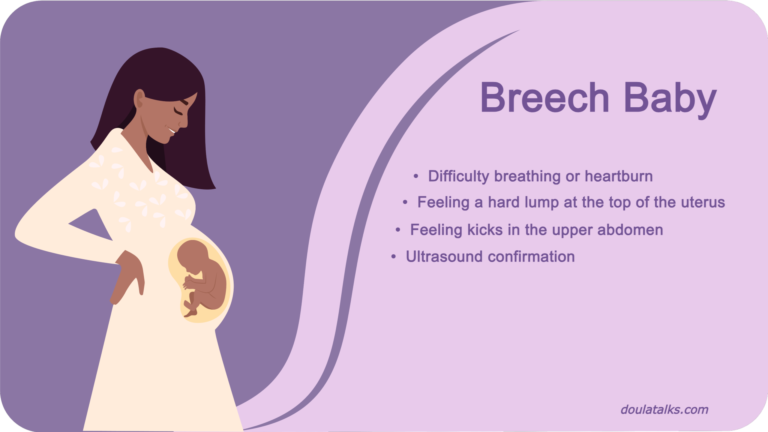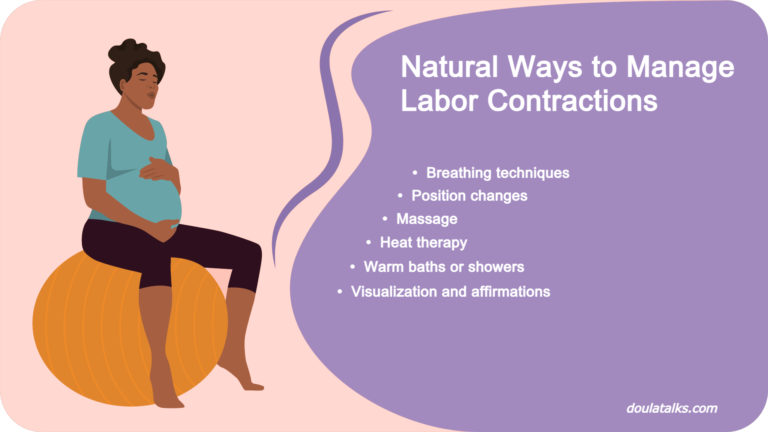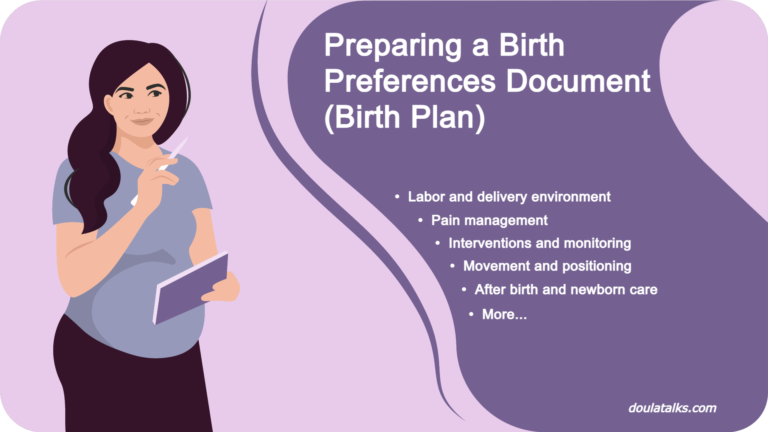Induced Labor
In the U.S., it is very common for health providers to offer an induction at 39 or 40 weeks. There are some medical conditions that require it, but oftentimes the recommendations have to do with outdated protocols or convenience reasons—and are not justified.
By Liat Salomon, doula
February 27, 2024
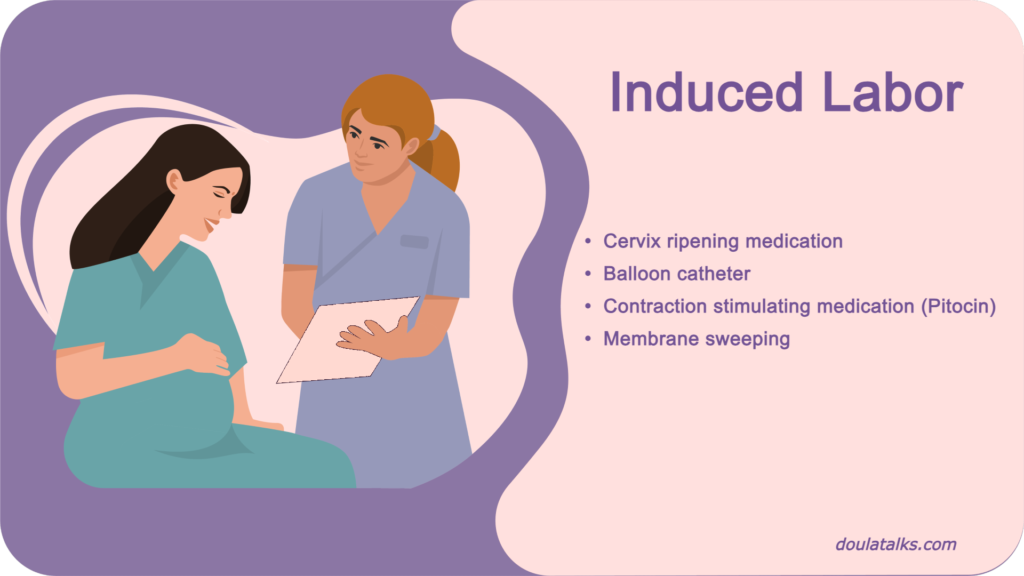
In This Article:
- Labor induction methods
- How painful is induced labor?
- Does the cervix have to be dilated before starting an induction?
- How long does it take from induction to labor, and how long will it take to give birth?
- What happens if you don't dilate after being induced?
- What are the risks for mom and baby of inducing labor?
- How many inductions end in C-sections?
- When should you not get induced?
- When do you ask for an epidural during induction?
- How to prepare for labor induction
- How to make labor induction easier
- Can you walk around after being induced? Can you sleep during induced labor?
- How to induce labor naturally
- How long do you stay in the hospital after an induced birth?
When I moved to California I thought that my days talking about excessive inductions were over. Boy, was I wrong…. I was blown away by the staggering number of inductions done here!
Labor induction is the process of artificially starting labor in a pregnant woman. This may be done for a variety of reasons, including if the woman is past her due date, if there are concerns about the health of the mother or baby, or if the woman has a medical condition that makes continuing the pregnancy risky.
In the past few years, there’s been an increase in the number of inductions being performed. There are multiple reasons for it, but the bottom line is that there are too many inductions being done—with no real medical reason—due to a protocol that does not look at someone’s actual condition and only takes into consideration a generic birthing person.
One common reason for labor induction is if the birthing person is past their due date. Pregnancy is typically considered full-term at 37 weeks, but the average length of pregnancy is actually closer to 41 weeks. In fact, statistically, first-time babies are born at 41+5.
Another reason for labor induction is a health concern for either the baby or the mother. For example, if the baby is not growing as expected or if the mother has a medical condition such as high blood pressure or liver issues, it could potentially put her and/or the baby at risk if the pregnancy continues.
In addition, certain medical conditions can make continuing the pregnancy risky for the mother, such as pre-eclampsia, placental abruption, or placental insufficiency. In these cases, inducing labor may be necessary to protect the mother’s health.
Labor induction methods
Several methods can be used to induce labor. One common method is to use medication to stimulate contractions. This can be done using oxytocin, a hormone that naturally occurs in the body and helps to stimulate contractions, with the medication Pitocin or through the use of prostaglandins (such as misoprostol), which are hormones that help to soften and thin the cervix. The choice of method will depend on various factors such as the woman’s health condition, the baby’s health, and the stage of pregnancy. Here are some other common methods used for inducing labor:
Membrane sweeping
This is a procedure in which a healthcare provider will use their fingers to sweep around the cervix, separating the amniotic sac from the cervix. This can help release hormones (prostaglandins) that may start contractions and initiate labor.
Balloon catheter
This method involves inserting a small balloon catheter into the cervix to help it dilate and soften, which can help trigger contractions.
Breaking the water
A healthcare provider can manually break the amniotic sac (which contains the fluid surrounding the baby) using a special tool. This can stimulate the release of hormones (prostaglandins) that may start contractions and initiate labor.
For further information on water breaking, you can read my article: “Rupture of membranes (water breaking)“.
I will say that breaking the water is my least favorite form of induction. I feel that it starts a whole new set of protocols and is not reversible. Also, after the water is broken, you can expect contractions to get a lot more intense—right from the start—instead of building gradually.
It’s important to note that all of these methods carry some risks, and induction should only be considered and done when medically necessary!
Also Read:
How painful is induced labor?
Induced labor can be more painful than spontaneous labor as the body is being forced into labor before it’s fully ready. The intensity of the pain can vary depending on the woman’s pain tolerance and the methods used for induction. The contractions experienced during induced labor can be more intense and frequent, and may feel different than natural contractions.
It’s important to have emotional support from partners, family members, and healthcare providers, as this can help manage anxiety and stress during labor and delivery.
Does the cervix have to be dilated before starting an induction?
The only induction method that requires dilation is membrane sweeping (stripping).
Other forms of induction do not require a certain dilation to begin, and some of them, like a catheter, are intended to start dilation.
How long does it take from induction to labor, and how long will it take to give birth?
The time it takes from induction to the start of active labor can vary depending on the method used and the woman’s individual circumstances. In some cases, labor may begin shortly after the induction process is started, while in other cases, it may take several hours or even days for labor to start. Your doctor should determine a “Bishop score” to try and predict your body’s readiness and help assess how close you are to labor.
Once active labor has begun, the length of time it takes to give birth can also vary depending on various factors such as the woman’s health, the baby’s position, and the use of pain medication.
Generally speaking, induced labor tends to take longer than spontaneous labor, as the body may not be fully ready for delivery.
What happens if you don't dilate after being induced?
If a woman does not dilate after trying one type of induction, her healthcare provider may recommend additional interventions to help progress labor. This can include the use of medications to stimulate contractions, such as Pitocin.
In some cases, if labor fails to progress despite these interventions, a cesarean section (C-section) delivery may be necessary.
What are the risks for mom and baby of inducing labor?
While labor induction is generally safe, it does carry some risks for both the mother and the baby. The specific risks can vary depending on the method used for induction, the woman’s individual medical history, and other factors. Some of the risks associated with inducing labor include:
Uterine hyperstimulation
The medications used to induce labor can cause the uterus to contract too strongly or too frequently, which can lead to uterine hyperstimulation. This can decrease blood flow to the placenta and put the baby at risk for oxygen deprivation.
Fetal distress
Inducing labor can increase the risk of fetal distress, particularly if the induction method causes strong or prolonged contractions.
Infection
Inducing labor can increase the risk of infection if the amniotic sac has ruptured before the onset of labor.
C-section
Inducing labor can increase the likelihood of a C-section delivery, particularly if the cervix is not yet ripe or the induction is not successful.
Postpartum hemorrhage
The risk of postpartum hemorrhage (excessive bleeding after delivery) is slightly higher with induced labor.
Maternal discomfort
Induced labor can be more painful and uncomfortable than spontaneous labor, which can increase maternal distress and anxiety.
How many inductions end in C-sections?
According to a large study conducted by the American College of Obstetricians and Gynecologists, the overall rate of C-sections for women who were induced was approximately 22%, compared to a rate of 13% for women who went into labor spontaneously. However, the rate of C-sections varied widely depending on the specific reason for induction, ranging from less than 10% for some medical indications to more than 50% for other indications.
When should you not get induced?
There are certain situations in which induction of labor is not recommended. These include:
Prior uterine surgery: If a woman has had certain types of uterine surgery, such as a classical C-section incision, induction using low levels of Pitocin is the only method recommended, and close monitoring is required to control the increased risk of uterine rupture.
Fetal distress or compromise: If the baby is already showing signs of distress or is not getting enough oxygen, induction may not be recommended as it can worsen the situation.
When do you ask for an epidural during induction?
The timing of when to ask for an epidural during induction of labor is a personal decision and can vary based on individual pain tolerance and preferences.
Some women choose to get an epidural as soon as possible during induction to help manage the pain from the start. Others may wait until they are in active labor and experiencing stronger and more frequent contractions before requesting an epidural.
How to prepare for labor induction
Preparing for labor induction can help you feel more comfortable and in control during the process.
The first thing to do, before agreeing to get induced, is to ask LOTS of questions to better understand the reason for the induction. This is not a decision that should be made lightly.
Then, learn about the specific procedure that is being suggested, what exactly will be done, and what to expect during the procedure. Understanding the process can help reduce anxiety and increase feelings of control.
Get plenty of rest as induction can be a long process and managing contractions is very exhausting.
Before leaving for the hospital, pack a hospital bag with all the essentials you will need for your hospital stay, including comfortable clothes, toiletries, and any items to help you relax, such as essential oils, lights, and music.
Eating a healthy meal before induction can provide energy and help maintain blood sugar levels during the process.
If you haven’t already done so during your pregnancy, try practicing relaxation techniques. Techniques like deep breathing, visualization, or guided imagery can help you stay calm and focused.
Some women feel that having their partners, or other support people, too early will be a waste of time, but I feel that since it may be long and may require making different decisions along the way, you should have all the support you can.
How to make labor induction easier
While labor induction can be a challenging process, there are several things you can do to help make it easier:
- Stay positive: A positive attitude and mindset can go a long way in helping to make labor induction easier. Surround yourself with supportive people and focus on the end goal of meeting your baby.
- Keep moving: Movement and activity can help to stimulate labor and allow your baby to get to the ideal birth position. Walking, rocking in a chair, or using a birth ball are all good ways to stay active during labor induction.
- Use relaxation techniques: Labor can be stressful, and techniques like deep breathing, visualization, or guided imagery can help you stay calm and focused. (For more information on relaxation techniques, check out my article: “Natural ways to manage labor contractions“).
- Stay hydrated: Drinking plenty of fluids will keep you hydrated and make labor induction easier.
- Advocate for yourself: If something doesn’t feel right or you have concerns, speak up and make sure you get answers.
Can you walk around after being induced? Can you sleep during induced labor?
In general, you should be able to walk and move freely around.
Sleep will depend on the intensity of the contractions.
Once contractions begin, walking and other upright positions may help the baby descend and make labor progress more smoothly.
Usually, you will have to be monitored during an induction, but you can ask for a wireless monitor and should still be able to move.
How to induce labor naturally
Several natural methods are believed to help induce labor, although it’s important to note that the effectiveness of these methods varies and not all of them are supported by scientific evidence.
Some natural ways to potentially induce labor include:
- Walking barefoot: Walking barefoot on sand, which produces an effect similar to reflexology, is a gentle exercise that can help stimulate labor contractions.
- Acupuncture: Acupuncture is a traditional Chinese medicine practice that involves inserting thin needles into specific points on the body to stimulate energy flow. It is believed that acupuncture can help to induce labor by stimulating the release of natural hormones that cause contractions.
- Nipple stimulation: Stimulating the nipples releases the hormone oxytocin, which can help to trigger contractions. However, it’s important to note that excessive nipple stimulation can lead to overly strong contractions, so it’s not recommended for women who have had a previous C-section.
- Sex: Having sex can help to induce labor by releasing oxytocin, which is a hormone that can help to soften and ripen the cervix. In addition, male semen has prostaglandins in it, and that can also help induce labor.
- Spicy foods: Eating spicy foods can help to stimulate the digestive system, which in turn can stimulate the uterus and potentially trigger contractions.
- Relaxation techniques: Stress and tension can inhibit labor, so practicing relaxation techniques like deep breathing, meditation, or prenatal yoga can help to reduce stress and anxiety and potentially help labor progress.
How long do you stay in the hospital after an induced birth?
The length of hospital stay after induced birth can vary depending on several factors such as the type of delivery (vaginal or cesarean), the mother and baby’s health, and the hospital’s policies.
For a vaginal delivery, the typical hospital stay after an induced birth is about 24 to 48 hours, assuming that the mother and baby are both healthy and there are no complications. However, some hospitals may allow for earlier discharge if certain criteria are met, such as the baby passing certain health checks and the mother showing that she can care for the baby.
For a C-section delivery, the hospital stay is usually longer, ranging from 2 to 4 days, again depending on the mother and baby’s health and the hospital’s policies.
On a personal note, I wish you a wonderful and happy labor!
Questions?
If you have any questions about this topic/article, please feel free to contact me through email at: liat@doulatalks.com
Liat Salomon is a certified doula since 2010 and is working in the San Francisco Bay Area in California. She has assisted in hundreds of births and has extensive experience with VBAC.
The information in this article does not constitute medical advice or diagnosis. It is meant for informational purposes only.
Related Articles:


